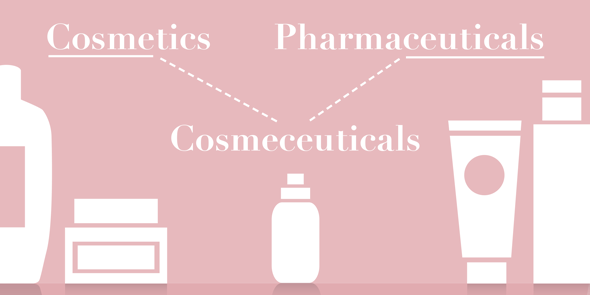Cosmeceutical products occupy a unique space in the market, bridging the gap between pharmaceutical and cosmetic products. They offer a range of medicinal or drug-like benefits, making them an ideal choice for consumers seeking results-oriented solutions or skin-repairing benefits. Cosmeceuticals are designed to work at a cellular level, avoiding the harsh chemicals typically associated with cosmetics products. They are also a cost-effective alternative to cosmetic surgery, making them an attractive option for many.
One of the critical components of cosmeceutical products is the active ingredients they contain. These compounds directly impact skin health and appearance and are formulated to target specific skin concerns, delivering noticeable results. Cosmeceuticals often contain various active ingredients, each with unique properties.
For example, antioxidants are a common ingredient in cosmeceuticals. These substances neutralize free radicals, which can cause oxidative stress and damage to the skin. Some of the most common antioxidants in cosmeceuticals include vitamin C, which helps stimulate collagen production, brightens the skin, and reduces hyperpigmentation, and vitamin E protects the skin from environmental damage and helps maintain its natural moisture barrier. Another popular antioxidant is niacinamide (vitamin B3), which reduces inflammation, improves skin elasticity, and regulates sebum production.
Exfoliants are another type of active ingredient found in cosmeceuticals. These ingredients help remove dead skin cells, revealing a smoother and more radiant complexion. There are two main types of exfoliants: alpha hydroxy acids (AHAs), which are water-soluble acids derived from fruits and milk that help exfoliate the skin’s surface, and beta hydroxy acids (BHAs), which are oil-soluble acids that penetrate deeper into the skin, unclogging pores and reducing inflammation. Examples of AHAs include glycolic acid, lactic acid, and mandelic acid, while the most common BHA is salicylic acid, which is particularly effective for acne-prone skin.
Peptides are short chains of amino acids that act as building blocks for proteins such as collagen and elastin. They can help stimulate collagen production, reduce the appearance of fine lines and wrinkles, and improve skin firmness. Growth factors are naturally occurring proteins that play a crucial role in cell growth, differentiation, and repair. Topical application of growth factors can help stimulate collagen production, improve skin texture, and reduce signs of aging.
Retinoids, a class of compounds derived from vitamin A, are known for their ability to stimulate cell turnover, improve skin texture, and reduce the appearance of wrinkles, fine lines, and hyperpigmentation. Examples of retinoids include retinol, retinaldehyde, and prescription-strength tretinoin. Hyaluronic acid, a naturally occurring sugar molecule, can hold up to 1,000 times its weight in water, making it an excellent hydrating agent. The topical application of hyaluronic acid helps improve skin hydration, plumpness, and elasticity.
Sunscreens are essential in cosmeceutical products. These ingredients protect the skin from the harmful effects of UV radiation. Examples include organic (chemical) sunscreens, such as avobenzone and octinoxate, and inorganic (physical) sunscreens, such as zinc oxide and titanium dioxide.
Plant extracts and botanicals are also commonly found in cosmeceuticals. These ingredients have various skin benefits, such as soothing inflammation, brightening the skin, or providing antioxidant protection. Examples include green tea, licorice root, chamomile, and aloe vera. Depigmenting agents, such as hydroquinone, kojic acid, azelaic acid, arbutin, vitamin C, niacinamide, and licorice extract, help to lighten the skin by reducing the production of melanin, the pigment responsible for skin color. Marine extracts, derived from various marine organisms like algae, seaweed, and marine plants, have gained popularity in skincare due to their unique properties and potential benefits for skin health.
Skin challenges that cosmeceuticals can be suitable for
With their unique blend of cosmetic and pharmaceutical properties, Cosmeceuticals can provide targeted solutions for various skin challenges. These challenges can vary from aging, hyperpigmentation, and acne, to dryness, redness, and sun damage. Cosmeceuticals containing specific active ingredients can help reduce the appearance of fine lines, wrinkles, and dark spots while unclogging pores and promoting cell turnover. Hyaluronic acid and glycerin can help maintain optimal hydration and reinforce the skin’s natural moisture barrier for dehydrated skin. Meanwhile, cosmeceuticals containing soothing ingredients like chamomile and niacinamide can help calm irritation and reduce inflammation for sensitive skin prone to redness and inflammation.
Sun damage, which can cause premature aging and increase the risk of skin cancer, can be addressed using cosmeceuticals with broad-spectrum sunscreens and antioxidants like vitamin C and green tea extract. In addition, cosmeceuticals with exfoliating agents like alpha hydroxy acids and enzymes can help to improve dullness and uneven skin texture by removing dead skin cells and promoting a more radiant complexion.
Cosmeceuticals can also address specific skin concerns such as rosacea, enlarged pores, dark circles, and scarring. Ingredients like niacinamide and retinol can help to minimize the appearance of enlarged pores by regulating sebum production and promoting cell turnover. At the same time, caffeine and hyaluronic acid can reduce the appearance of dark circles and puffiness under the eyes. For those with compromised skin barriers, cosmeceuticals containing ceramides and fatty acids can help repair and strengthen the skin’s natural protective barrier, preventing moisture loss and reducing sensitivity.
Finally, cosmeceuticals with DMAE and copper peptides can help improve skin firmness and elasticity by stimulating collagen production and strengthening the skin’s structural support. Cosmeceuticals with clay, charcoal, and tea tree oil can also help manage oily skin by absorbing excess sebum and regulating oil production for a more balanced complexion. By addressing these skin concerns, cosmeceuticals can offer a more potent and effective solution than traditional cosmetics.
Examples of Cosmeceutical Products
- Anti-Aging Creams and Serums
- Advanced Skin Cleansers
- Skin Tightening Products
- Moisturizers
- Sun Protection
- Anti-Acne
- Skin Whitening
- Anti-Cellulite
- Anti-Wrinkles
- Scar Gels and Creams
- Body Slimming Creams
- Hair Growth Products
- Hair Fall Solutions
- Scalp Repair
- Anti-Dandruff Solutions
- Lip Care and Rejuvenation Products
- Hyaluronic Acid (HA) based Products
Trends in Cosmeceuticals
Trends in the cosmeceuticals industry are constantly evolving as consumers seek more effective and innovative skincare solutions. Here are some notable trends in the cosmeceuticals sector:
- Personalized skincare: Utilizing technology for custom solutions.
- Clean and sustainable beauty: Emphasizing eco-friendly products.
- Plant-based ingredients: Offering skin benefits.
- Probiotics and prebiotics: Supporting skin microbiome health.
- Blue light protection: Defending against digital device exposure.
- Multifunctional products: Providing convenience.
- Skin barrier health: Strengthening and supporting.
- Inclusive skincare: Catering to diverse needs.
- Epigenetics in skincare: Innovative application.
- Nanotechnology: Enhancing ingredient delivery.
- Advanced delivery systems: Improving ingredient effectiveness.
- Neurocosmetics: Targeting skin-neuroreceptor interactions.
- Ayurvedic medicine integration: Holistic approach to skincare.
- At-home skincare devices: Offering professional treatments.
- Inside-out beauty: Promoting skin health via nutricosmetics.
- Men’s skincare: Expanding market and product offerings.
- Transparency and consumer education: Informing customers.
- Age-specific skincare products: Catering to different life stages.
- Stress-relief and mood-enhancing items: Addressing mental well-being.
- Technology integration: Personalizing skincare routines.
- Skin microbiome research: Understanding skin health interactions.
- Vegan and cruelty-free products: Ethical skincare options.
- Fusion of beauty and wellness: Holistic care for overall well-being.





